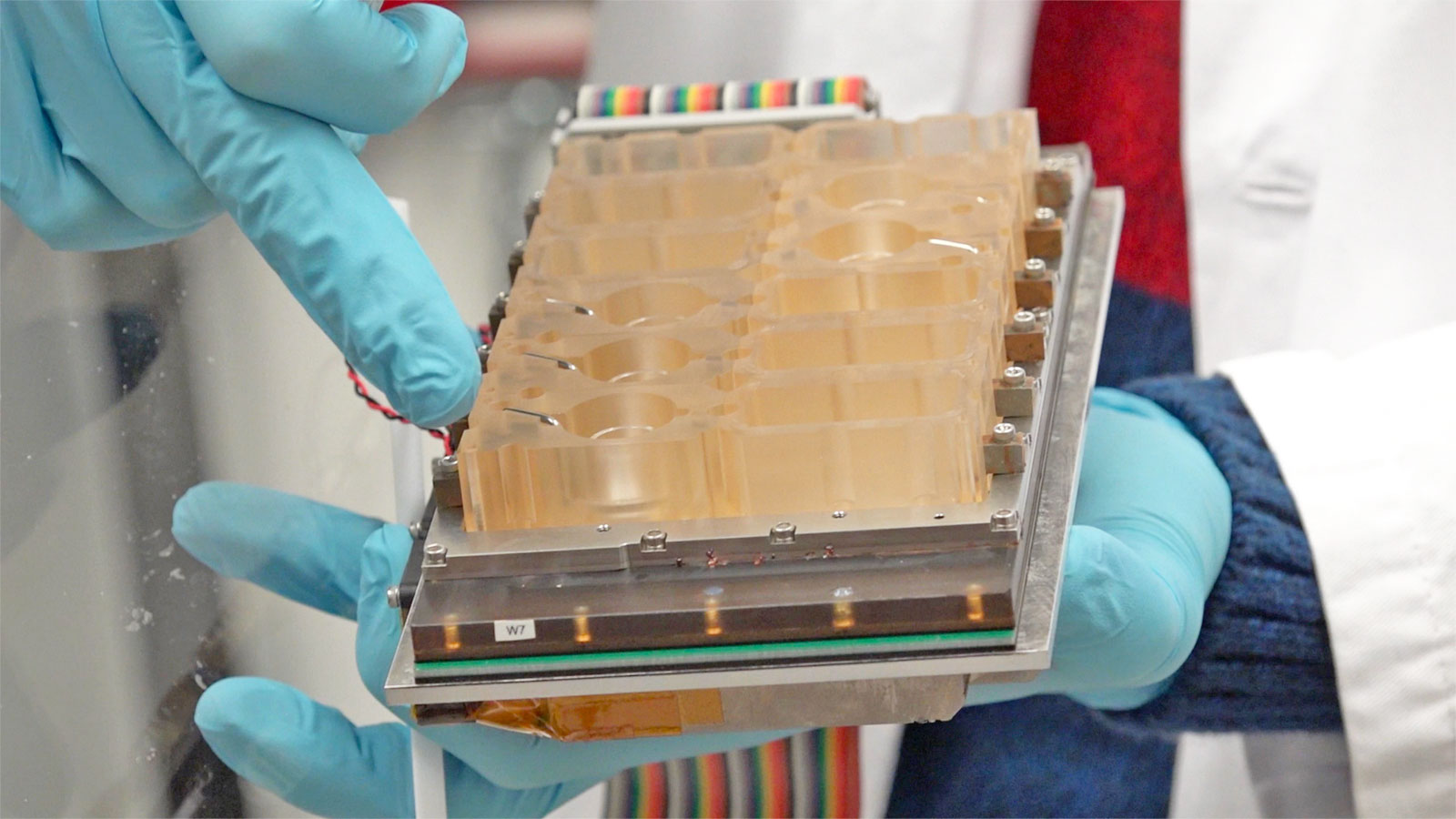
While we've seen more than a few flexible batteries in our day, they're not usually that great at withstanding tugs and pulls. A team-up between Northwestern University and the University of Illinois could give lithium-ion batteries that extreme elasticity with few of the drawbacks you'd expect. To make a stretchable battery that still maintains a typical density, researchers built electrode interconnects from serpentine metal wires that have even more wavy wires inside; the wires don't require much space in normal use, but will unfurl in an ordered sequence as they're pulled to their limits. The result is a prototype battery that can expand to three times its normal size, but can still last for eight to nine hours. It could also charge wirelessly, and thus would be wearable under the skin as well as over -- imagine fully powered implants where an external battery is impractical or unsightly. There's no word yet on whether there will be refined versions coming to real-world products, but we hope any developments arrive quickly enough to give stretchable electronics a viable power source.
Filed under: Wearables, Science, Alt
Comments
Via: ScienceDaily
Source: Nature
 Apple isn't quite done announcing educational plans in Chicago. It just unveiled a partnership with Northwestern University and public schools to help teachers bring programming and other forms of computer science into Chicago-area classrooms. The tr...
Apple isn't quite done announcing educational plans in Chicago. It just unveiled a partnership with Northwestern University and public schools to help teachers bring programming and other forms of computer science into Chicago-area classrooms. The tr...
 Apple isn't quite done announcing educational plans in Chicago. It just unveiled a partnership with Northwestern University and public schools to help teachers bring programming and other forms of computer science into Chicago-area classrooms. The tr...
Apple isn't quite done announcing educational plans in Chicago. It just unveiled a partnership with Northwestern University and public schools to help teachers bring programming and other forms of computer science into Chicago-area classrooms. The tr...
 Your abilities to speak and swallow are frequently signs of how well you're coping after a stroke, but measuring that is difficult. Microphones frequently can't distinguish between the patient and ambient sounds, and there's the not-so-small problem...
Your abilities to speak and swallow are frequently signs of how well you're coping after a stroke, but measuring that is difficult. Microphones frequently can't distinguish between the patient and ambient sounds, and there's the not-so-small problem...
 Scientists don't understand as much as they'd like about the female reproductive system, both due to their historical exclusion from studies and the challenge in replicating the complexities of that anatomy. At last, however, there's progress. Resear...
Scientists don't understand as much as they'd like about the female reproductive system, both due to their historical exclusion from studies and the challenge in replicating the complexities of that anatomy. At last, however, there's progress. Resear...
 If humans are ever going to have a long-term presence on Mars, they'll need to make their own buildings -- they can't count on timely shipments from Earth. But how do they do that when the resources they have will share little in common with what th...
If humans are ever going to have a long-term presence on Mars, they'll need to make their own buildings -- they can't count on timely shipments from Earth. But how do they do that when the resources they have will share little in common with what th...



